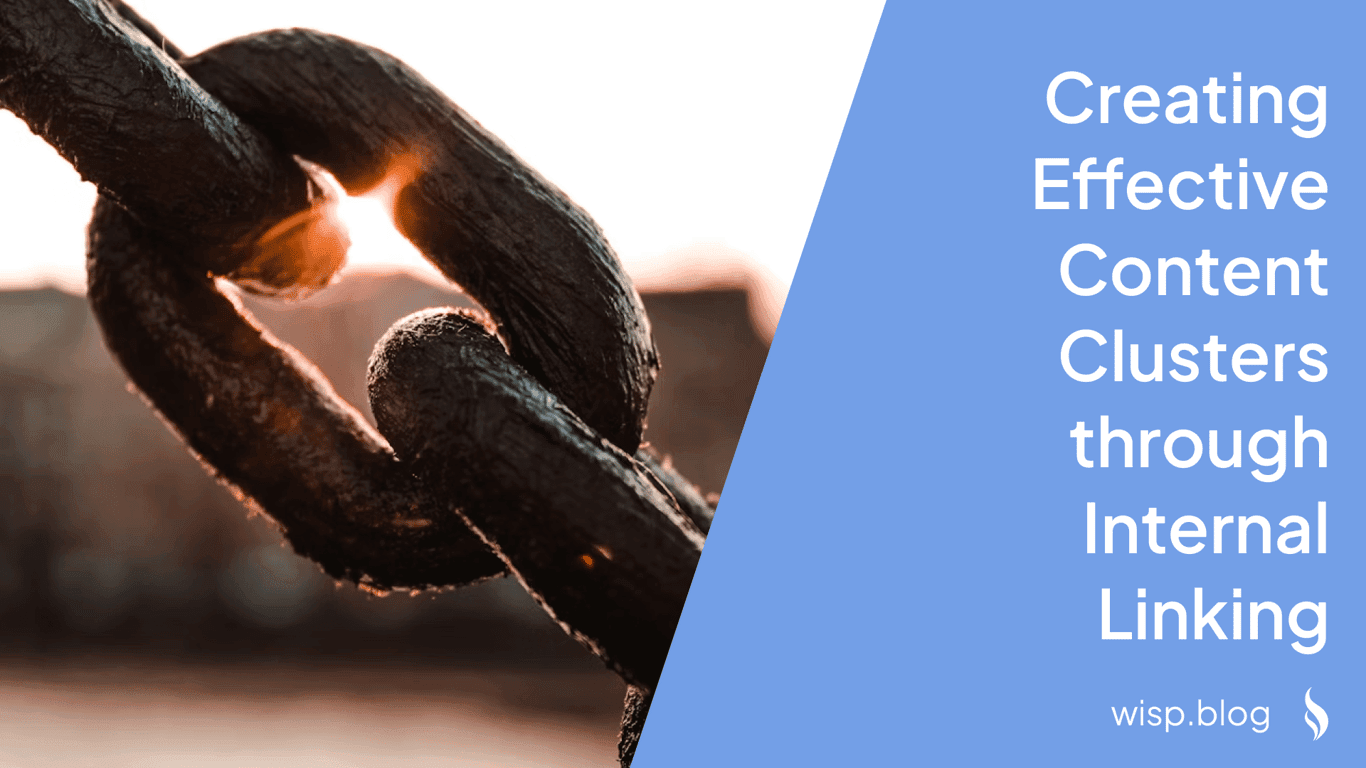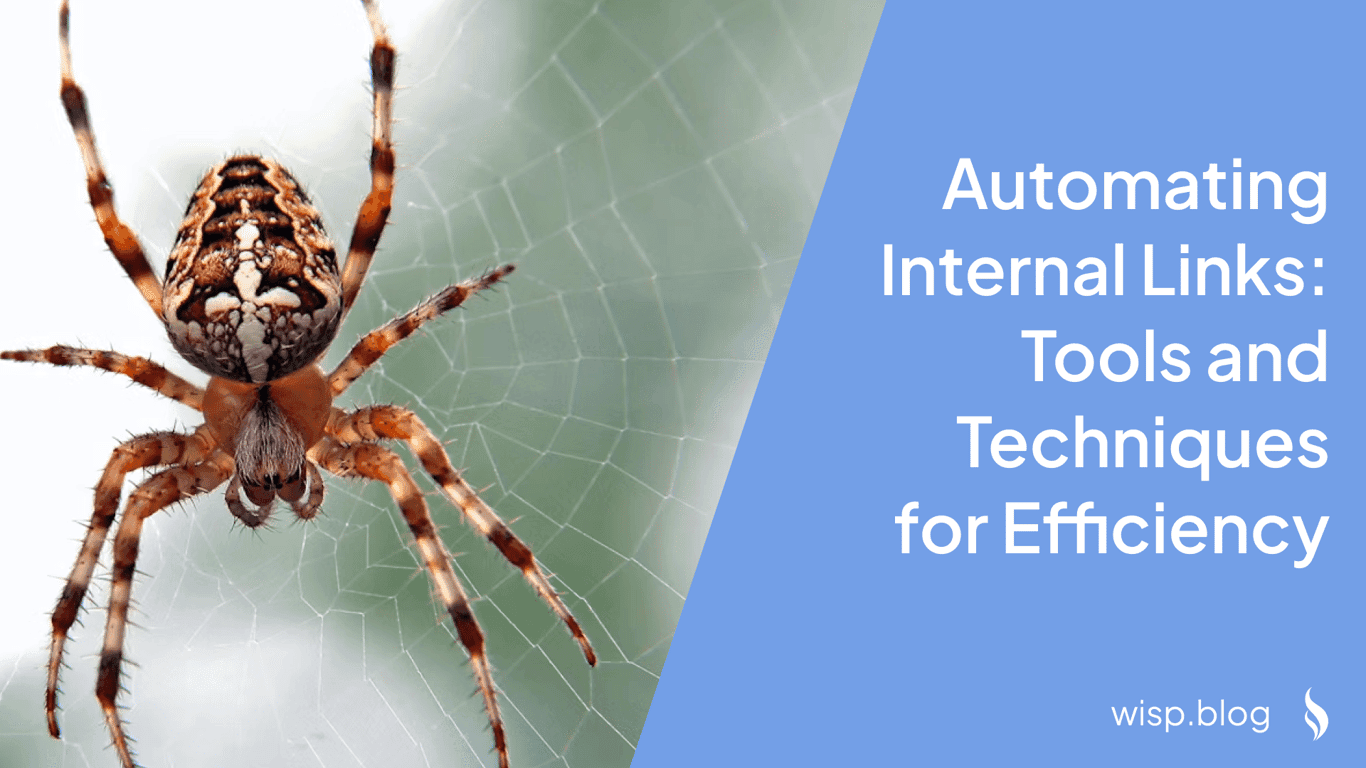 You've built a site with thousands of pages, and now you're facing a daunting challenge: creating a cohesive internal linking structure that connects everything meaningfully. Each time you publish new content, the web of potential connections grows exponentially, making manual management increasingly impractical.
You've built a site with thousands of pages, and now you're facing a daunting challenge: creating a cohesive internal linking structure that connects everything meaningfully. Each time you publish new content, the web of potential connections grows exponentially, making manual management increasingly impractical.
As one site owner with over 12,000 posts lamented, "Manually building internal links sounds like a lot of pain as the quantity of posts grows." This sentiment echoes across countless forums and communities where SEO professionals struggle with scaling their internal linking efforts.
But there's good news: with the right strategies and tools, you can transform this overwhelming task into a manageable, systematic process that boosts your SEO while enhancing user experience.
Why Internal Linking Matters for Large Sites
Internal linking isn't just SEO 101—it's the backbone of your site's architecture. For large websites, a proper internal linking structure serves several crucial functions:
Distributes link equity throughout your site, ensuring high-authority pages pass value to newer or less visible content
Improves crawlability, helping search engines discover and index your content more efficiently
Creates content clusters that establish topical authority in your niche
Enhances user navigation, reducing bounce rates and increasing engagement
Provides context for both users and search engines about how content relates
As one SEO professional noted, "Internal linking has got to be the most underrated tactic for SEO wins. The effort to gain ratio is just bonkers." This is particularly true for larger sites, where the compound effect of strategic internal linking can dramatically improve overall site performance.
Best Practices for Internal Linking on Large Sites
1. Establish a Clear Site Architecture
Before diving into tactical linking, develop a strategic architecture that organizes your content into logical categories and hierarchies. This foundation makes all your subsequent linking decisions more coherent.
Implement a pyramid structure:
Top level: Your homepage and key landing pages
Second level: Main category/pillar pages
Third level: Subcategories and supporting content
Bottom level: Individual articles and product pages
This hierarchy ensures that your most important pages receive the most internal links, creating a natural flow of link equity throughout your site.
2. Identify and Leverage High-Authority Pages
Some pages on your site naturally attract more external links and traffic. These high-authority pages should be strategic sources for internal links.
"On a 10k page site, you might have 200 posts that are absolutely pillar - that means that 9,800 posts should be linking to those 200," explains one SEO strategist on Reddit.
To identify these pages:
Check Google Search Console for pages with high click rates
Review your backlink profile to find pages with the most external links
Analyze your analytics to determine which pages have the highest engagement
Once identified, systematically link from these pages to relevant content that needs visibility boosts.
3. Avoid the "Loop-Soup" Trap
A common pitfall for large sites is creating what SEO professionals call "loop-soup" - a tangled web of internal links that create circular references and dilute link equity. As one cautious practitioner warned, "Linking based on relationship rules or 'semantically' will just create loop-soup and you'll introduce cannibalization."
To avoid this:
Be intentional with each link, ensuring it serves a purpose beyond simply linking related content
Avoid excessive cross-linking between pages at the same hierarchical level
Create a structured linking plan that flows primarily from higher-level pages to more specific content
4. Optimize Your Anchor Text Strategy
The words you use as clickable links (anchor text) provide crucial context for both users and search engines. For larger sites, maintaining consistency in anchor text becomes increasingly challenging.
Best practices for anchor text on large sites:
Use descriptive, keyword-rich phrases rather than generic "click here" or "learn more"
Avoid over-optimization with exact-match anchor text across multiple pages
Maintain natural language that fits seamlessly into your content
Vary your anchor text when linking to the same destination from different pages
 Illustration showing how to use anchor text effectively
Illustration showing how to use anchor text effectively
5. Implement Regular Link Audits
"Their internal linking is a bit of a mess," observed one SEO reviewing a large site. "Their anchor text is either over-optimized or single-word, internal links often go to articles completely unrelated to the linking article and the anchor text, many of the internal links are broken, and some are going to archived pages that have been or will be noindexed."
This scenario is all too common for large sites without regular maintenance. Implement a link audit workflow that includes:
Checking for broken links weekly using tools like Screaming Frog or Ahrefs
Identifying orphaned pages (those with no internal links pointing to them)
Reviewing link relevance to ensure contextual appropriateness
Assessing anchor text distribution to avoid over-optimization
Evaluating overall link equity flow using Google Search Console
One SEO manager recommends, "Go to GSC, limit the pages view to pages >180 clicks over 90 days" to focus your audit efforts on the most important content.
6. Automate Where Appropriate
The key to scaling internal linking for large sites is finding the right balance between manual curation and automation. While manual linking ensures the highest quality connections, automation tools can significantly reduce the workload.
Synscribe has created their own content pipeline which can automatically discover existing content assets that could be linked to when creating new content and also suggest changes to existing assets. Having AI workflows like this can greatly speed up content operations in a scaled up organisation.
Tools for Managing Internal Links on Large Sites
1. Link Whisper
Link Whisper uses AI to analyze your content and suggest relevant internal linking opportunities. It's particularly useful for large sites because it:
Provides linking suggestions as you write
Offers a bulk addition feature for adding multiple links at once
Generates reports on orphaned content and linking opportunities
However, some users with very large sites have reported performance issues. As one site owner noted, "Link Whisper's slow performance with large sites" can be a limitation.
2. LinkBoss
LinkBoss is designed specifically for larger sites and provides:
Automated internal link suggestions based on content analysis
Bulk editing capabilities for efficient link management
Custom rules for controlling which pages link to others
Regular scanning for broken links and orphaned pages
3. Koala Links
Koala Links is a newer entrant to the market that's gaining attention for its performance with large sites. The tool:
Automatically suggests semantically relevant internal links
Provides a user-friendly interface for quick implementation
Offers real-time link analysis and recommendations
Works efficiently even with thousands of pages
4. Google Search Console
While not specifically designed for internal linking, Google Search Console provides invaluable data for informing your internal linking strategy:
Identifies which pages Google has indexed
Shows which pages receive the most clicks and impressions
Highlights crawl errors that might indicate linking problems
Allows you to monitor how changes to your internal linking affect search performance
Strategic Implementation for Large Sites
Content Clusters and Pillar Pages
Organizing your content into topic clusters is particularly effective for large sites. This strategy involves:
Creating comprehensive "pillar" pages that cover broad topics in depth
Developing numerous supporting articles that explore specific aspects of the topic
Linking from supporting content to pillar pages and vice versa
Using consistent terminology and related keywords across the cluster
This approach not only creates a logical internal linking structure but also signals to search engines that your site has authoritative coverage of the topic.
Automated Breadcrumbs
Implementing automated breadcrumbs is a technical solution that creates consistent navigational links based on your site structure. These breadcrumbs:
Show users their exact location within your site hierarchy
Create additional internal links that reinforce your site structure
Improve user experience by providing easy navigation paths
Are automatically generated based on your content organization
For large sites, automated breadcrumbs ensure that every page has at least basic internal linking without manual effort.
Related Articles Sections
Implementing automated "Related Articles" sections at the end of your content provides additional internal linking opportunities. These can be generated based on:
Category or tag relationships
Semantic analysis of content
Manual curation for your most important pages
User behavior data showing common navigation paths
Many content management systems offer plugins or modules that can automatically generate these sections based on your predefined rules.
 Site audit example showing internal linking structure
Site audit example showing internal linking structure
Balancing Manual and Automated Approaches
While automation is essential for managing internal links at scale, the most effective strategy combines automated systems with strategic manual intervention. As one SEO professional noted, "The key is being strategic, not just adding random links."
Consider this balanced approach:
Use automated tools to generate initial link suggestions and identify opportunities
Manually review and refine the most important internal links on high-traffic pages
Implement automated systems for breadcrumbs, related posts, and category links
Regularly audit your internal linking structure to identify and fix issues
This hybrid approach ensures efficiency while maintaining quality control over your most valuable linking opportunities.
Conclusion
For large websites, internal linking represents both a significant challenge and an enormous opportunity. By implementing a structured approach that combines strategic planning, regular auditing, and appropriate automation, you can transform a daunting task into a systematic process that drives real SEO results.
Remember that the effort invested in creating a cohesive internal linking structure pays dividends in improved search visibility, enhanced user experience, and more efficient distribution of link equity throughout your site.
As your site continues to grow, revisit your internal linking strategy regularly to ensure it evolves alongside your content. The bigger your site becomes, the more crucial proper internal linking becomes to your overall SEO success.
With the right combination of best practices and tools tailored specifically for large websites, you can master internal linking at scale and unlock the full potential of your content ecosystem.



